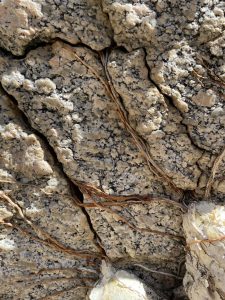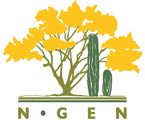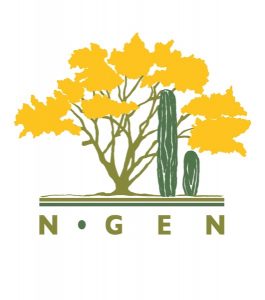
Title: Plant-animal/microbes interactions: past, present, future, and the humans
Convener: Brigitte Marazzi
Participants: Alberto Burquez, Alexis Rife, Alfonso Medel, Andrés Lira, Barbara Larraín B., Blanca Romero, Camila Pion Paez, Carolina Trujillo Lopez, Christine Hoekerge, Daniel Morales, Danielle Carter, Elisabet Wehncke, Emmanuel Mario Bernal Loaiza, Enriquena Bustumunte Ortega, Kim Franklin, Kimberlie McCue, Lyn Loveless, Mario Erandi Bonillag Monge, Osvel Hinojosa, Pacifica Sommers, Rafael Routson, Richard Felger, Rodrigo Medellín, Tram Nguyen
Discussion:
Motivation and aim
Plant-animal and plant-microbe interactions are fundamental components of biodiversity and are vital to ecosystem functioning. Given the extreme conditions of desert environments, plants and animals face great challenges to survival, and their interactions appear particularly dramatic and crucial.
Some of the questions motivating this sessions were: How well do we know these interactions in the Sonoran Desert? What role do they play in the ecology and evolution of the Sonoran Desert ecosystem? Are any such interactions threatened by human disturbances? Can we come up with something equivalent of a “red list of interactions”?
The aim of the session was to address these and many other questions of interest dealing with aspects related to the natural history of plant-animal interactions in the Sonoran Desert, human disturbance, and perspectives for research and conservation of such interactions.
Results from the discussion
While mentioning examples from a wide range of interactions (pollination, herbivory incl. florivory and seed predation, seed dispersal, mycorrhiza, nodulation and other root-bacteria/microbe interactions) it became clear that our current knowledge about any aspect of these interactions in the Sonoran Desert is punctual and not comprehensive at all.
In this session we identified several take home messages that can be summarized into five main points:
-
We need to improve our knowledge of the natural history (diversity, ecology, evolution) of interactions, both as individual entities and entities linked to one another;
(2) We need to monitor interactions on broad spatio-temporal scales to be able to put them into the context of climate change and identify consequences especially for seasonal interactions involving migratory species;
(3) We need to identify the human activities with the greatest interference and disruption on interactions;
(4) We need to develop criteria to compile a “priority interaction list” to improve and strengthen our ecosystem conservation efforts;
-
We need to use interactions to restore disrupted habitat and ecosystem.
In the following, we list a number of aspects that were discussed and issues that were
identified within each main point.
1. Natural history of interactions (diversity, ecology, and evolution)
– Diversity of the species involved in the interactions
– Identify patterns of food resource distribution and availability for monitoring and
– Link interactions and the levels at which interactions plays (below and above ground)
– Effects of presence/absence of water for the functioning of root-microbe interaction – Extent and importance of the various interactions (e.g. levels of herbivory in desert plants)
2. Long-term monitoring of interactions
– Long-term monitoring of interactions at three levels: scale of interaction, space, and time
– Seasonality (of interactions) and climatic change and consequences
– Migratory animals and the changes in the flora/fauna as the interaction of organisms and their food resource
– Problems with using existing collection databases, like herbaria are not accurate enough for interactions
– Monitoring traits that are correlated to the interaction, e.g. traits linked to reproductive success, such as fruit occurrence.
– Standardizing interaction monitoring as to have data that can be compared (comparable data!)
3. Human activities that most affect interactions
– Agricultural activities and below ground interactions
– Fertilizers
– Climate change
4. Priority Interaction list
– Interaction extinction risk assessment
– Use the literature, criteria to define the list
– Obligate and other kinds of interactions (example of pollination of agaves by bats)
– Patterns of interactions in communities, abundance
– Functional categories of interactions – Importance for reserve management
5. Use of interactions to restore disrupted habitat and ecosystems
– Bioremediation, recuperation plans (e.g. Bashan Foundation)
– Information on methods using interactions for ecosystem restoration – Plant-microbe interactions play a role in containing invasive species


